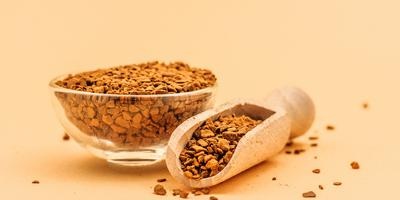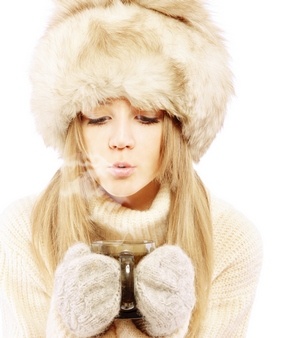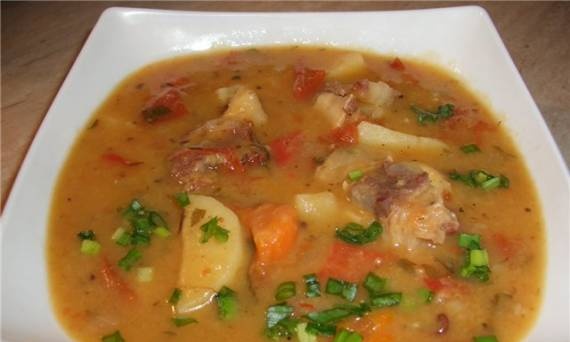|
 People have different opinions about coffee. One thinks that it is as important as bread. They even came up with a saying: "Anyone who drinks coffee in the morning does not get tired all day!" Others are more cautious. People have different opinions about coffee. One thinks that it is as important as bread. They even came up with a saying: "Anyone who drinks coffee in the morning does not get tired all day!" Others are more cautious.
And they remember the sad fate of the Danish postmen. By tradition, they are treated to a cup of aromatic drink in every home. It is suspected that it is for this reason that they die early from heart disease.
However, coffee can be different: Arabica and other varieties, instant and beans. Behind all this the fate of countries, peoples, trade ... At first it seemed to the planters to grow coffee as profitable as to develop a gold mine. Especially in Cuba. But this led to dramatic consequences. Now we have to restore the forest. Half a bucket of earth is poured into the bag. A tree will be planted in it and a bag will be squeezed between the rocks from which the soil has been washed away. This is the price to pay for modern foresters for the fact that in the past, planters illiterately planted coffee. Disregarding the laws of nature.
Rommelsbacher EKM 200 coffee grinder review
The island of eternal summer Ceylon was once planted with coffee trees. And the island of Java. And other islands in Indonesia. It never occurred to them to go to the homeland of coffee, to Ethiopia, and see how it grows there. Ethiopia is a special country. It lies on a high plateau. On the plateau. There coffee grows in dense forests, in the shade and dampness. Doesn't like a sunbeam too strong.
And the planters planted it anywhere. True, from above it was shaded by other tall trees, but the situation was still not the same. It was then that the parasitic fungus Hemileia attacked the coffee, and with it twenty other pests. The trees dried up in masses, the planters clutched at their heads, but nothing could be done. When Professor of Botany A. Krasnov arrived in Ceylon, he could not find a single surviving plantation. Found only a few dead stunted bushes. This is all that remains of past splendor. The same fate befell coffee on the island of Java and elsewhere.
 I foresee the question: we drink coffee every day. So, not all of them died ... Somewhere survived? Of course, the world is diverse. Conditions are different, coffee is also different. The Hemiley fungus has dealt mainly with the best type of coffee - Arabica. Other varieties have survived, and among them the best one is Congolese. They called him Robusta. Translated means - healthy, strong, rude. All three names are surprisingly accurate for the Congolese tree. It is not affected by the fungus - this is the main thing. Stays healthy. Overjoyed Indonesians planted almost all of their Robusta plantations before World War II. I foresee the question: we drink coffee every day. So, not all of them died ... Somewhere survived? Of course, the world is diverse. Conditions are different, coffee is also different. The Hemiley fungus has dealt mainly with the best type of coffee - Arabica. Other varieties have survived, and among them the best one is Congolese. They called him Robusta. Translated means - healthy, strong, rude. All three names are surprisingly accurate for the Congolese tree. It is not affected by the fungus - this is the main thing. Stays healthy. Overjoyed Indonesians planted almost all of their Robusta plantations before World War II.
But robusta is called rude for a reason. It is inferior in quality than Arabica. And it's harder to sell it. I don't know what coffee planters would do if the world hadn't invented instant coffee. Instant is made from a mixture of different varieties, which includes robusta.
But what about Arabica? He also survived. But only where such amenities were created for him, as at home. Now Arabica is grown where the height of the area is over a thousand meters above sea level. Robustu is below a thousand. Arabica is a mountain dweller, and whoever forgets about it will be in trouble and disappointment.
Another question is asked: why is Arabica Arabian if it is a native of Ethiopia? Maybe they called him wrong? Let's compare the facts. The best product is not made in Ethiopia, but in Arabia, in Yemen. Five centuries ago, Yemen had a "blessed" coffee garden. And the mocha was shipped from the port of the same name. On the other hand, the very word "coffee" is very consonant with the word of Kaffa, one of the provinces of Ethiopia. Travelers who visited Kaffa talked about wild coffee forests: there is so much coffee that you can collect thousands and thousands of tons. Carry not carry!
How can you grind coffee if you don't have a coffee grinder?
Botanists, although they did not really believe this, nevertheless, a scientific expedition went to the Ethiopian forests. Of course, the travelers exaggerated. But still, here and there groups of trees came across. They grew, as expected, under the protective canopy of other, mighty and tall trees of other species. The main defense was given by anchar, once sung by Pushkin. The botanists had already decided that coffee in the forests was wild, when the following circumstance suddenly struck them. Next to coffee groups, very often there were breeds that were not at all forest - candelabra milkweed and dracaena. These plants are companions of human habitation, because in Africa they are used as living fences. Now it was not difficult to continue the thought and draw the following conclusion: since the remains of living fences appeared next to the coffee, it means that the coffee is not wild in the forest, but wild. And if so, then what about the homeland of coffee? So she's in Yemen? In Arabia?
 We asked about the history. And she seems to have confirmed the conclusion. Previously, Kaffa was densely populated. Then the population scattered due to civil strife. The villages were deserted and the rainforest swallowed them up. We asked about the history. And she seems to have confirmed the conclusion. Previously, Kaffa was densely populated. Then the population scattered due to civil strife. The villages were deserted and the rainforest swallowed them up.
To be more convincing, scientists decided to trace how the fate of the feral creature develops further. And here interesting facts came to light. The age of the trunks turned out to be different, but a strict pattern was observed: the oldest trees always grew on the tops of the hills, and the youngest ones in the lowlands, near the rivers. How to explain? There were villages on the hills. Therefore, it is quite understandable that the oldest specimens have survived there. From them, animals transported seeds to other places. Or maybe the water carried during the showers. But why is coffee tending to rivers? The French professor O. Chevalier, the best coffee connoisseur, guessed. Yes, for the reason that coffee is a resident of coastal forests. So he returns to his rightful place. So, he is local, local. And in Yemen it was brought by caravans, the Arabians. They still like coffee very much. Return delivery is completely excluded. Why? Because religion forbade Ethiopians to drink an invigorating drink. And if you don't drink, why should you import it?
And now about the animals. They do not always carry seeds to the rivers (the pulp, of course, is eaten along the way). Sometimes - to the caves. Elephants, birds, monkeys are carrying. Someone discovered that stronger and healthier trees grow in place of animal toilets. Then they began to hire boys to collect seeds, choosing from heaps of manure. Seed material washed from impurities is sold on the market at a high price. And it often bears the name of the animal that prepared it.
A. Smirnov. Tops and roots
|
 People have different opinions about coffee. One thinks that it is as important as bread. They even came up with a saying: "Anyone who drinks coffee in the morning does not get tired all day!" Others are more cautious.
People have different opinions about coffee. One thinks that it is as important as bread. They even came up with a saying: "Anyone who drinks coffee in the morning does not get tired all day!" Others are more cautious. I foresee the question: we drink coffee every day. So, not all of them died ... Somewhere survived? Of course, the world is diverse. Conditions are different, coffee is also different. The Hemiley fungus has dealt mainly with the best type of coffee - Arabica. Other varieties have survived, and among them the best one is Congolese. They called him Robusta. Translated means - healthy, strong, rude. All three names are surprisingly accurate for the Congolese tree. It is not affected by the fungus - this is the main thing. Stays healthy. Overjoyed Indonesians planted almost all of their Robusta plantations before World War II.
I foresee the question: we drink coffee every day. So, not all of them died ... Somewhere survived? Of course, the world is diverse. Conditions are different, coffee is also different. The Hemiley fungus has dealt mainly with the best type of coffee - Arabica. Other varieties have survived, and among them the best one is Congolese. They called him Robusta. Translated means - healthy, strong, rude. All three names are surprisingly accurate for the Congolese tree. It is not affected by the fungus - this is the main thing. Stays healthy. Overjoyed Indonesians planted almost all of their Robusta plantations before World War II.

























